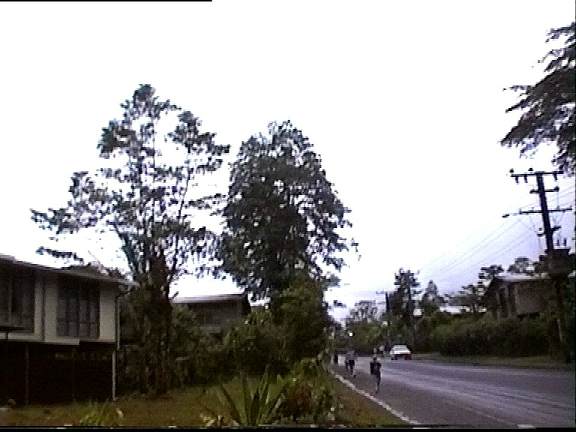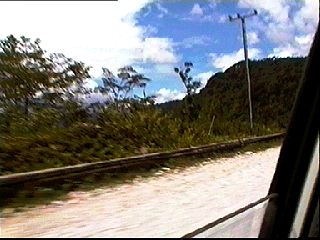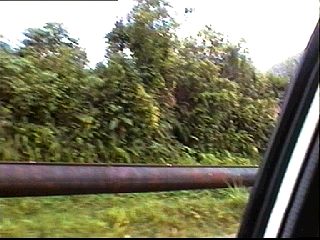Ok Tedi Mine - A World of its Own
The ore deposit was discovered by Kennecott company in
1968, but Kennecott dropped the project. BHP and several other companies
took over, formed the mining company Ok Tedi Mine Limited (OTML),
and started production in 1984.
To develope the site, a mining town, Tabubil was built. The area of
the town is one of the "leases" to OTML, which means, it is formally private
ground. The town depends on the mine - energy supply, drinking water, waste
water treatment, traffic connections.

From Tabubil to the mine, a 20 km access road was laid, and between Tabubil
and Kiunga, the port on the Fly River, another new road had to be built.
On the Ok Menga, a tributary south of Tabubil, a power plant was installed,
that serves the mine and the town. Despite enormous rainfall on Mt. Fubilan,
additional water from another river is deviated to the mine, to feed the
flotation facility. The slurry of ore concentrate is brought through a
15 cm pipeline from the mine to Kiunga.

The thin grey pipe at the side of the road carries the product.

The big pipe supplies water to the mill and flotation utilities
In the videoclip, the drive from
Tabubil to the mine is displayed. Watch the different pipelines!
 Digging
a pit Digging
a pit
 Index
of Ok Tedi pages Index
of Ok Tedi pages
 back
to Homepage back
to Homepage
|







 rettet-die-elbe.de
rettet-die-elbe.de
